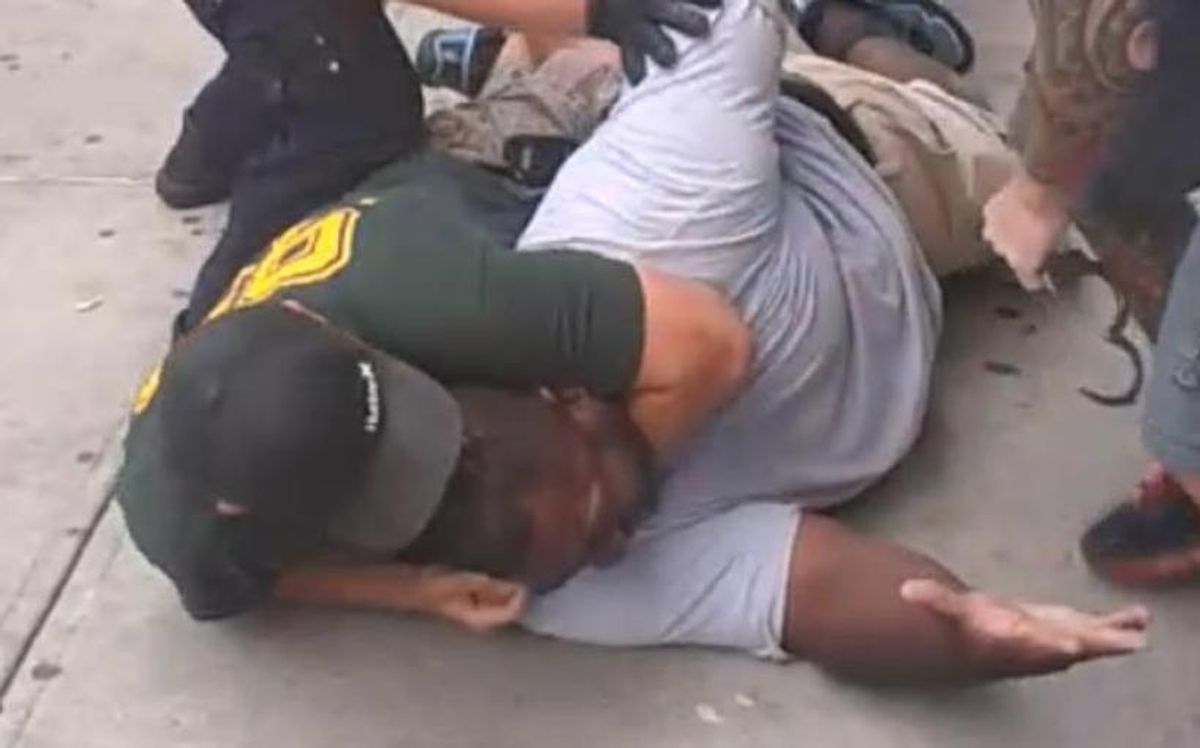Last summer, a day after the coroner ruled Eric Garner’s death a homicide, Ramsey Orta was arrested in Staten Island on gun charges. Orta had filmed Garner’s killing at the hands of NYPD officer Daniel Pantaleo, so while the charges were apparently unrelated, the timing seemed remarkably suspicious. These suspicions were backed up by Orta’s aunt Lisa Mercado, who told "Democracy Now’s" Amy Goodman about police harassment against her nephew, which included patrol cars driving by at night and shining spotlights into the windows of his home. Then in February, Orta was arrested again, along with his mother and brother, this time for allegedly selling drugs to undercover cops. While in jail, Orta refused to eat in fear of further retaliation; just last month, 19 inmates at Rikers were denied medical testing after saying they found rat poison in their meals.
Now, with the help of a campaign on GoFundMe that raised more than $50,000 from about 2,000 people, Orta is finally out on bail after months on Rikers Island. Orta is the only person involved with the Garner case who has served any time in jail since the incident.
While police departments across the country slowly begin to mount body cameras on officers, Orta's story is illustrative of the fear law enforcement still has of being filmed -- more particularly, their fear of being filmed by other people’s cameras. It’s no accident that governments from Spain to Texas have drafted laws banning the filming of police officers. As Radley Balko pointed out in the Washington Post last year, despite multiple court rulings that have established the right to film on-duty officers, Americans are still regularly detained for doing so.
Now in the wake of two recent killings, the practice of filming the police has fueled debate once again. In North Charleston, South Carolina, Patrolman Michael Slager was arrested and charged with the murder of Walter Scott after footage taken by 23-year-old bystander Feidin Santana came to light. The Scott video attracted attention due to its documentation of evidence tampering; after shooting Scott to death from behind, Slager appears to drop his taser next to Scott’s body, in what would amount to framing a dying man for his own murder, while declining to provide medical attention.
Feidin, like Ramsey Orta, was scared of police retribution, and told a reporter than he considered erasing the video and leaving town.
A different video, taken from a deputy’s body camera over a week ago, shows the shooting of Eric Harris by 73-year-old insurance executive Robert Bates, who was volunteering as a “reserve deputy” in Tulsa, Oklahoma. At the end of the video, as Harris frantically yells that he’s losing his breath, another cop can be heard telling him “Fuck your breath” -- a telling rejoinder not just to Harris but to Garner, whose final plea of “I can’t breathe” became a rallying cry at last year’s protests.
One of the oft-noted ironies of the Garner case was the city’s introduction of body cameras at almost the exact moment a murderer caught on film was told he wouldn’t even have to stand trial. The grand jury’s decision suggested that even the most heinous and clearly documented crimes could be excused, provided the perpetrator were a cop and the victim were black. A cry arose from many on the left that body cameras on cops were band-aids on a gushing wound, totally inadequate to deal with the deeply entrenched racial biases embedded in the modern police department.
While these criticisms are valid, they ignore the positive potential of “cop watch” for activists and ordinary citizens. The purpose of cameras is not merely to disseminate the footage but to change the behavior of a cop who knows he’s being filmed. As Raven Rakia recently wrote in the Nation, “There are many different purposes of cop watching—the most immediate one: police officers may change how they’re interacting with someone when they realize a camera is watching them.” A recent field study on body cameras conducted by the Rialto, California, police department backs this up, noting that “Shifts without cameras experienced twice as many incidents of use of force as shifts with cameras.” Considering the possibility for tampering, body cameras on cops are a less reliable, though more consistent, protection against police brutality than smartphones.
It is worth noting that the Rodney King trial would likely not have occurred had George Holliday not happened to be standing on his terrace across the street from where the attack occurred, holding a camcorder. What made the incident unique was not the beating itself, but the unambiguous truth revealed by its documentation on video. Just one year earlier, in 1990, an organization called Copwatch had begun conducting street patrols and holding “Know Your Rights” training sessions in Berkeley, California, in response to rampant police harassment. These tactics have since gained popularity among activists nationwide, finding support in local patrols like Copwatch Patrol Unit in New York City.
Luddites on the left tend to paint technology as both a cause and symptom of capitalist waste. New technologies create a market for consumer goods, allowing firms to deplete natural resources while extracting surplus labor from exploited workers; meanwhile, the productive forces necessary to make and distribute these goods necessitates ever more rapid advances in technology. Meanwhile, some privacy activists paint any new development involving cameras as just one more sign of our descent into Orwellian mass surveillance. These critiques make some valid points, but they leave out the potential for technological advances to inadvertently empower ordinary citizens.
Body cameras are better than nothing, but the best hope for holding cops accountable lies in people like Ramsey Orta and Feidin Santana, whose smartphones are far more ubiquitous than George Holliday’s camcorder ever was. Footage of police violence isn’t enough to spur structural change without organized pressure, but it provides a mountain of evidence that the status quo is horrific and untenable.

Shares